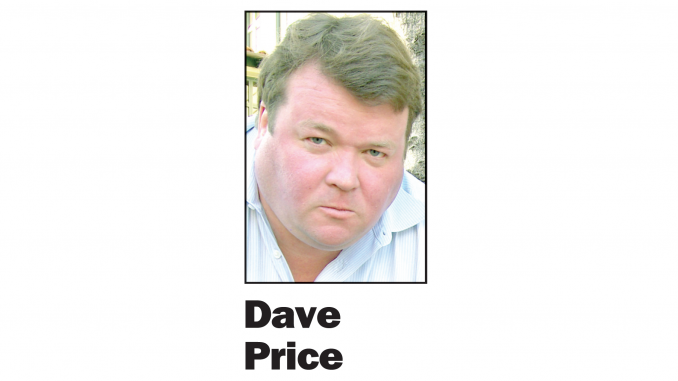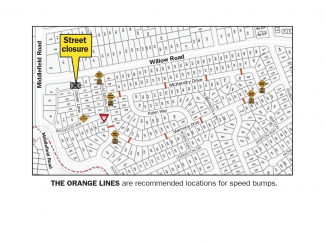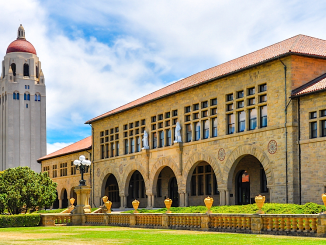
OPINION
BY DAVE PRICE
Daily Post Editor
You’ve got to wonder what Marc Tessier-Lavigne, the new president of Stanford University, is thinking right now.
The approval of an office building the university wanted to build on Sand Hill Road is in jeopardy. Another building planned for Quarry Road is in doubt. And it won’t be long until the controversy I’m about to tell you about draws added scrutiny to Stanford’s attempt to obtain a new general use permit, or GUP, that would allow it to build almost 2.3 million square feet over the next 18 years, expanding the university by bringing about 9,600 students, faculty and workers to campus.
This story begins on Friday afternoon, Oct. 20, when Menlo Park City Councilman Ray Mueller discovered to his surprise that Stanford was seeking approval from Santa Clara County to build a 115,000-square-foot building for its medical school’s faculty and staff.
Sand Hill Road traffic
What made this proposal problematic is that it would be on Quarry Road, between Arboretum Road and Stanford Hospital, which is close to Sand Hill Road. Menlo Park City Council has been hearing from Sand Hill Road residents about increasing traffic, so this caught Mueller’s attention.
Stanford was going to have a hearing on Oct. 26 to get the permission of the Santa Clara County Planning Commission to shift some square footage for future buildings from the east side of campus to the Quarry Road site. The square footage was allowed under the university’s 2000 GUP with the county.
Mueller asked his colleagues on City Council to hold a special meeting before Oct. 26 so Menlo Park could organize a response before the Planning Commission hearing. The special meeting didn’t happen but the Planning Commission agreed to postpone the Quarry Road item until Nov. 16.
How did Menlo Park get taken by surprise? Palo Alto, after all, had been told about the Quarry Road development and sent a memo to the Planning Commission about it.
Stanford said it wasn’t their responsibility to notify Menlo Park, that was the job of the county Planning Commission. And, according to Menlo Park, nobody at the county sent them any notice.
I suspect some Menlo Park officials think Stanford was trying to sneak one by them. Menlo Park and Stanford have had a rocky relationship for years — remember how the city refused to widen its portion of Sand Hill Road when the Palo Alto part of the road was expanded to four lanes?
Approval to be reconsidered
What happened next shows how irked Menlo Park is about this.
Last week, Councilwoman Catherine Carlton asked the four other members of council to reconsider their approval of another Stanford project, a 40,000-square-foot office building at 2131 Sand Hill Road, next to the Hewlett Foundation.
In an email to the rest of council on Tuesday, Carlton said Stanford didn’t tell them about the Quarry Road building when the 2131 Sand Hill Road project was up for approval.
“I am concerned that the traffic implications of the construction of this building will have adverse traffic impacts on the Sand Hill Road corridor, the El Camino Real corridor and other streets in the City of Menlo Park and that our decision might have been different had all relevant information been available to us,” Carlton wrote.
Ouch!
The Menlo Park council had approved the 2131 Sand Hill project on Oct. 17 in a 3-2 vote, and Carlton was among the three voting yes. From her email, it sounds like her vote could change, and that could be the end of 2131.
During the the hearings on 2131, traffic was a big concern. Residents in the Sharon Oaks neighborhood, on the northwest side of Sand Hill Road across from 2131, said the traffic has become so bad that they wanted Stanford to chip in and help pay $200,000 to rehabilitate a sound wall.
Their argument was that since Stanford extended Sand Hill Road to El Camino Real in 2000, traffic has been increasing due to expansions of the Stanford Shopping Center and Stanford Hospital. For the record, Stanford denies the traffic has been increasing, and says the Quarry Road project will have only minimal impacts.
A stunning outburst
At an Aug. 29 meeting, Stanford’s top real estate executive, Steve Elliott, used unusually blunt language to shoot down any idea the university would pay for a sound wall.
“This is an opportunistic recognition that Stanford has deep pockets, and probably wouldn’t care … it wouldn’t be any skin off of Stanford’s teeth to help pay for that and it’s purely a money grab and we’re not going to do it,” Elliott told the council. “And that’s how I feel about it.”
It was a stunning outburst. Carlton told Elliott “by reading your body language and tone, you’re feeling emotional and angry.”
Elliott should have made peace with the neighbors before the meeting and de-escalated the issue.
And accusing residents of a money shakedown was off the mark considering it’s one of the wealthier neighborhoods in Menlo Park. Residents can easily come up with the money for the wall, but the issue was the principle of it all — if you create problems, you should solve them.
Elliott’s comments were unfortunate for Stanford. They simply drew attention to the traffic controversy.
Now, not only is Stanford in jeopardy of losing its 2131 development approval, but it won’t have an easy time convincing Santa Clara County to approve the Quarry Road project.
A reasonable question the Planning Commission might ask is: How much traffic will these two projects, 2131 and Quarry, put on Sand Hill Road?
The Quarry project would be permitted under the umbrella of the university’s 2000 GUP. But a lot of things have changed in 17 years, and the environmental report measuring traffic back then might not be valid today.
The timing of this is bad for Stanford. This Sand Hill Road controversy will only draw more scrutiny to the new GUP application.
Tessier-Lavigne has kept a low-profile since taking the top job at Stanford last year. At what point does he shake up his land-development team? When does he come down from the ivory tower and deal with these issues personally?
Editor Dave Price’s column appears on Mondays. His email address is [email protected].



